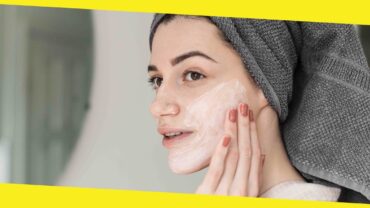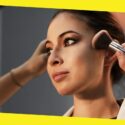Risks Associated with Cosmetic Surgeries – How to Minimize them?

We live in the age of amazing medical breakthroughs. Medical science has evolved over recent years with remarkable new developments. From diagnosis to treatment, prevention, and artificial organs, medical science has reached the heights of excellence.
Although the history of cosmetic surgeries and skin grafting dates back to 800 BC, the progress in medical science has made it possible for humans to alter their natural features. The past few years, in particular, have witnessed a significant development in cosmetic surgery.
People worldwide undergo cosmetic surgery to change their appearance, and this trend is becoming increasingly popular. In the United States alone, millions of people have undergone cosmetic surgery in the last five years.
However, it comes with its fair share of pros and cons. Despite the usual risks, one of its biggest fail-safes is that it cannot guarantee success in improving your appearance. Even if you find an expert in the said procedure, you must be willing to deal with basic upkeep and check for precautions.
Below, we have suggested types of surgeries with risks and possible ways to minimize potential risks.
Types of Cosmetic Surgery and Their Risk Factors
Below are some common types of cosmetic surgeries:
-
Biopolymer Fillers
Biopolymer is a bio-prothesis derivative of silicone and methacrylate. Men and women use fillers to prevent wrinkles and expression lines or add volume in areas of lost tissue for reconstruction or to change appearance. Women mostly use it for breast and hips augmentation.
Risk Factors: In case of a rash or infection, cosmetic surgeons recommend a biopolymer removal procedure at the site of old cosmetic surgery. Since biopolymer is a foreign element inserted inside the body, it may lead to serious health consequences, including cancer. For this reason, the FDA has strongly cautioned against using biopolymer inside the body for aesthetic purposes.
-
Breast Augmentation
This cosmetic surgery uses your body fat or synthetic breast implants to give more volume to your breasts. Breast augmentation is commonly called breast enhancement or enlargement.
Risk Factors: Although there is no evidence of major side effects of breast enlargement, some side effects include post-surgery scarring, wrinkled skin, and changes in nipple sensation. Adverse effects of breast implants call for emergency medical treatment and possible breast cancer diagnosis. These symptoms include changes in nipple color, bending of nipples inwards, leaking implants, painful and inflamed breasts, and redness in the area where implantation took place.
-
Skin Grafting
Skin grafting is a cosmetic surgery to reconstruct your body and recover damaged tissue. During skin grafting surgery, the surgeon will take a patch of your skin from other parts of your body, mostly from the hips or thighs, and stitch a patch over the damaged area.
Risk Factors: So far, skin grafting is the safest cosmetic surgery procedure with minor side effects such as scarring, bruising, pain, redness, and swelling, which go away on their own within 2-4 weeks of surgery. In severely mishandled cases, infections in the grafted area may develop.
-
Botox
Botox surgery uses synthetic fillers or natural fats and “fills” it in areas of the face or other body parts that need enhancements. Open surgery is another method of Botox treatment. Botox is done at smaller sites, such as the forehead, while biopolymer is usually done on larger areas, such as the hips and breasts. In contrast, botox can be done anywhere on your body, particularly on lips, cheeks, jaws, eyes, and foreheads. Biopolymer is a solid substance that stays intact, whereas botox injections and surgeries require regular (every six months) maintenance.
Risk Factors: Botox also have minor post-surgery symptoms, which go away after surgery for a few days. However, cosmetic surgeons recommend special care for skin exposure to ultraviolet rays, daylight, and dry air for at least 1-2 months to avoid harmful effects.
-
Eyelid Surgery
Eyelid surgery, also called blepharoplasty, is performed on the upper and lower eyelids to improve the appearance of the eyes. Most people undergo eyelid surgery to remove wrinkles and fat pockets near the eyelids and look younger.
Risk Factors: Common risk factors of eyelid surgery include swelling and bruising on the surgery site, dryness of the eyes, scarring, and sensitivity to light. Adverse side effects include changes in vision and ectropion eyelids (outward folding of eyelids).
-
Liposuction
Liposuction is the most common cosmetic surgery to “melt” layers of fat from underneath the skin. Liposuction can be performed on the belly, legs, buttocks, arms, back, and face to make it look slimmer.
Risk Factors: Liposuction may cause bruising, scarring, inflammation, and changes in skin and skin color at the surgery site. In rare cases, patients may develop cellulitis due to exposure to external bacteria. The absence of timely treatment may worsen cellulitis and cause sepsis in the body leading to death.
-
Tummy Tuck
Tummy tuck surgery involves the removal of fat and skin from the body to tighten the abdominal muscles.
Risk Factors: Due to some serious side effects of a tummy tuck, most physicians recommend obese patients lose weight naturally through proper diet plans and exercise. The side effects of a tummy tuck include fluid accumulation, inflammation, skin discoloration, numbness, redness and pain, and scarring. In worst cases, blood clots may form at the surgery site and travel up to the heart, causing fatality.
-
Nose Surgery or Nose Job
Nose surgery is also called rhinoplasty, which removes the hump from your nose. Apart from giving an unpleasant look, a bigger than usual hump on the nose may also cause breathing issues and consistent nasal infections or allergies. Rhinoplasty can make your nose look smaller and more pointed.
Risk Factors: Performing a nose job doesn’t always guarantee a successful nose reshaping, which is the biggest setback of bose surgeries. Other risk factors include scarring, bleeding, dry nose, tear in the nose cartilage, and trouble breathing.
How to Minimize Risks of Cosmetic Surgeries?
The simplest way to minimize the risks of cosmetic surgery is not to opt for unnecessary surgeries. However, if you develop any of the above symptoms that prolong for more than two months, it’s time to consult your cosmetic surgeon or general physician. Here are some steps which can help in minimizing the risks of cosmetic surgeries:
- Always choose the best available cosmetic surgeon in your locality to avoid misadventures.
- Always keep a check on any change in the shape of your breasts after breast enlargement.
- Keep noticing the site of cosmetic surgery for any visible changes, inflammation, redness, or bleeding.
- Talk to your surgeon about how you feel about the surgery. Try to understand what happened to your body after the surgery, and most importantly, never blame the surgeon.
- Your surgeon will run a few tests to help them figure out what is causing the onset of symptoms or adverse reactions. They will diagnose the problem and recommend treatment.
- If the symptoms are severe and there is a high risk attached, the surgeon may need to reverse the surgery or perform another surgery to eradicate any problems. Be prepared for the solution the surgeon may offer and cooperate with them.
- If you are unsatisfied with your cosmetic surgeon, consider finding a new one. If you feel the surgeon did something inappropriate, file a complaint against them. You can file your complaint with the state medical board. The medical board will take appropriate action if there is any malpractice during the surgery.
- Surgeries like liposuction and tummy tucks require you to adopt a healthy lifestyle after surgery. Adverse reactions only occur when you don’t follow your surgeon’s advice and return to unhealthy eating soon after the surgery.
- Exercise daily and make healthy food choices.
- Adopt good body care habits, use scar creams, sunscreens, ointments, and other high-quality skin products, and use them on the surgery site.
- All cosmetic surgeons always provide follow-up instructions and carefully follow these instructions to minimize the risk involved in cosmetic surgeries.
Final Thoughts
While cosmetic surgery has far-reaching benefits, the disadvantages may put you in unavoidable situations. Those undergoing cosmetic surgery should ensure a safe procedure by selecting a qualified cosmetic surgeon and visiting them regularly after the surgery to check for any unusual symptoms. While it is a great way to enhance your appearance, the right precautions and follow-up instructions are equally important for a successful cosmetic surgery.
Recommended For You
Why Cleansing Your Skin Matters: Benefits
Most Inside
Most Inside offers high-quality recommendations and valuable updates to enhance all aspects of your life, providing premium guidance and enriching experiences.




